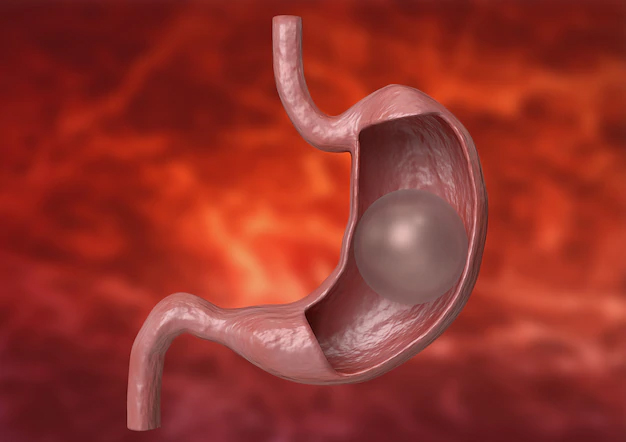
Gastric Balloon
Intragastric balloon, is a non-surgical weight-loss procedure which involves the insertion of a specialised balloon inside the stomach to occupy space and limit the food carrying capacity of the stomach. This makes you feel full sooner and limits your intake to smaller portions. The procedure is temporary and the balloon is usually removed after a period of 6 months. Gastric balloon is a non-surgical weight loss treatment recommended for those individuals who are not good candidates for weight loss surgery. Indications and contraindications. The gastric balloon is indicated in the following patients:
BMI 27-40 kg/m2
Unable to lose weight with exercise and diet
Willing to participate in a medically-supervised lifestyle and behaviour modification program
The weight loss system is contraindicated in the following patients:
Have previously undergone bariatric surgery
Are suffering from inflammatory diseases of the GI tract, large hiatal hernia, structural abnormalities in the pharynx or oesophagus, and are prone to upper GI bleeding
Allergy to materials used during the procedure
Alcoholics or drug abusers
Women who are pregnant or breastfeeding
Procedure
The placement of the gastric balloon is carried out as an outpatient procedure. The procedure is performed endoscopically under sedation. The deflated gastric balloon is attached to an endoscope, a narrow lighted tube with a camera attached, which is guided through your mouth and into the stomach. Once in proper position, your doctor inflates the balloon with saline and a dye, or gas to the desirable size. While the endoscope is removed, the balloon is retained in the stomach. The entire procedure takes about 15 minutes to complete. You will be able to leave the hospital soon after.
The balloon is temporarily left in the stomach for about 6 months, following which it is removed. The removal of the gastric balloon is also performed under sedation.
Post-Operative care
Following the procedure, your throat might feel a little sore and you may experience some cramps and nausea as your stomach adjusts to the balloon. You will be on a liquid or soft diet for a few weeks. This is followed by 6 months of supervised diet and behaviour-modification that will be taken care of by a multidisciplinary team of nutritionists, gastroenterologists and medical weight loss physicians. This helps you to continue eating healthy and staying active, which will greatly influence results.
Risks and complications
The gastric balloon procedure is generally safe but as with any procedure complications may occur and can include:
Oesophageal or gastric ulcers or perforation
Deflation of the balloon which can lead to blockage.
Should the balloon rupture, the dye if used, will be released in the urine and you can notify your doctor immediately.
Frequently Asked Questions
How does the gastric balloon work?
Intragastric balloon is a non-surgical weight-loss procedure which involves the insertion of a specialised balloon inside the stomach to occupy space and limit the food carrying capacity of the stomach. This makes you feel full sooner and limits your intake to smaller portions.
Is the gastric balloon suitable for everyone?
No, the gastric balloon is indicated in patients with a BMI of 30-40 kg/m2, who is not able to lose weight with exercise and diet and for one who is willing to participate in a medically-supervised lifestyle and behaviour modification program.
How long should the gastric balloon stay inside the stomach?
The balloon is temporarily left in the stomach for about 6 months, following which it is removed.
How is the gastric balloon removed?
The removal of the gastric balloon is performed under sedation.
How is the recovery after the procedure?
Following the procedure, your throat might feel a little sore and you may experience some cramps and nausea as your stomach adjusts to the balloon. You will be able to leave the hospital soon after.
Do I need a special diet following the procedure?
You will be put on a liquid or soft diet for a few weeks. This is followed by 6 months of supervised diet and behaviour-modification that will be taken care of by a multidisciplinary team of nutritionists, gastroenterologists and medical weight loss physicians. This helps you to continue eating healthy and staying active, which will greatly influence results.
Are there any side effects or complications associated with the gastric balloon?
The gastric balloon procedure is generally safe but as with any procedure, complications may occur and can include oesophageal or gastric ulcers or perforation and deflation of the balloon which can lead to blockage.
